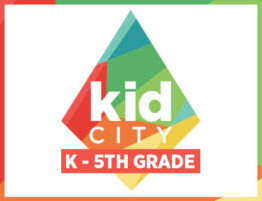
God’s Word Rocks!
Send the kids out to find a nice, big rock to paint (about the size of your fist). Wash and dry the rocks and set them aside to dry. While they are drying, ask: Have you ever known that throwing a rock and breaking something turned out good?
In 1947, Jum’a Muhammed and Muhammed edh-Dhib, two cousins were looking for a stray goat and one of them threw a rock into a cave. Something broke…oh no! They entered the cave and found some scrolls. They discovered some of the oldest copies of the Bible (called Dead Sea Scrolls) dating back to 100-200 BC.
Once the Dead Sea Scrolls were translated and compared with modern versions, the Hebrew Bible proved to be identical, word for word, in more than 95% of the text. (The variation of 5% consisted mainly of spelling variations.) Overwhelming evidence shows that God has preserved His Word and accurately relayed it through the centuries. (From Beyond Belief to Convictions by Josh McDowell and Bob Hostetler.)
Decorate the rocks (with markers or paint) and write sayings on them. (God Rocks; The Bible is True; Count on God’s Word; etc.)
How the Bible Did NOT Come to Us
Play a simple game to illustrate how the Bible was NOT passed to us. Have everyone sit in a circle and whisper a sentence into the ear of the first person. Tell that person to pass your message to the person on their right. Continue having each person repeat the message without you repeating it. Ask the last person to say the message. Then tell the original message.
How were the two messages similar? different? WE don’t always hear things correctly and we might give a wrong message. God wanted people to know Him so He gave us His message, the Bible. The Bible is not a collection of man’s words, but they are from God (2 Peter 1:20-21). Jesus said His Word would never pass away (Mark 13:31). God wants us to know His Word and He made sure it was preserved—even though many have tried to destroy it.
Carefully Preserved
Pick a Bible verse and invite your kids to become scribes. A scribe was part of a special group of people who were dedicated to carefully preserving the ancient manuscripts and producing new copies when necessary. Instruct the kids to carefully write the Bible verse—one letter at a time on the page. Then count the number of letters (including punctuation) in the verse (you may want to do this ahead of time and give them the total). Then ask them to count the number of letters (including commas and the period) in their copy. Do they match? A true scribe would start over if there was even one mistake.
Facts about scribes:
- The first thing a scribe would do each day was to ceremonially clean their entire body.
- Then he would dress in full Jewish dress before sitting at his desk.
- They followed many rules because they wanted to treat God’s name and His words with the highest respect.
- When they came to the Hebrew (the language the Old Testament was written in) name for God, they could not stop or allow themselves to be distracted even if a king was to enter the room.
- Each column had to be exactly 30 letters wide.
- The space of a thread must appear between every consonant.
- A space of three lines had to appear between each book.
- Nothing—not even the shortest word—could be copied from memory; it had to be copied letter by letter.
- They counted the number of letters in the book. After they finished copying it, they had to count each letter and compare it to the original. If they had found even one mistake, they had to throw it away and start over again.
Do you think you would like this job? It was a very slow, tedious job, but they wanted to make sure that God’s Word was carefully preserved for every generation to read.
(This information was adapted from the book, Beyond Belief to Convictions, by Josh McDowell and Bob Hostetler, Tyndale House Publishers, Wheaton, Illinois, 2002, pages 170-172.)
The post Splink | Preservation of the Word appeared first on D6 Family.
Source: Splink


